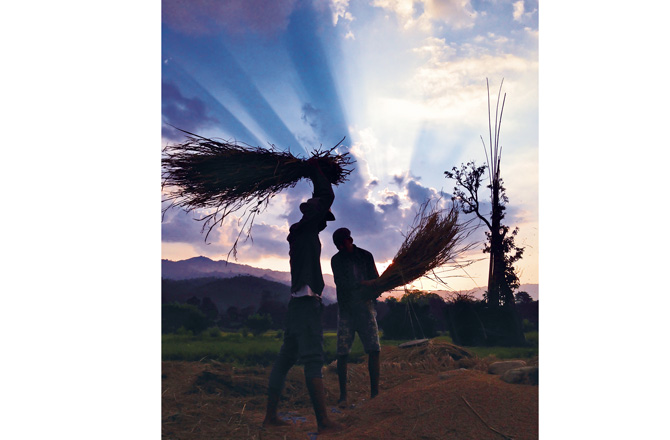It is the time of the year when women and men come out in groups for harvesting with sickle and nanglo in their hands, singing folk songs that reflect their lives and social strata.
As the saying goes, it is only the farmer who faithfully plants seeds in the spring, who reaps a harvest in the autumn. In the spring, the farmers prepare the soil. In the summer they cultivate, and it is in the fall that the crops are harvested. In a country where agriculture dominates the economy, majority of the farmers still practice traditional process of farming, using domesticated animals like oxen, buffalo, and cows for ploughing, and using the livestock’s waste as compost.
The process of harvesting is also traditional. Threshing of paddy using the traditional threshing machine is a common site. Although the manual and time-consuming process of using flail to separate the grains is still in practice. In the summertime, people get up right after the sun rises, and start gathering the crops in the early morning light. But, during the fall, they wait for midday with the moisture on the crops having evaporated by the midday sun. They come out in numbers, singing different folk songs that rhyme well with their laughter. Just like the songs of the farmers, harvesting in Nepal is also seasonal and weather dependent. Rice is harvested in October-November, whereas wheat is a winter crop, which is harvested around April.










